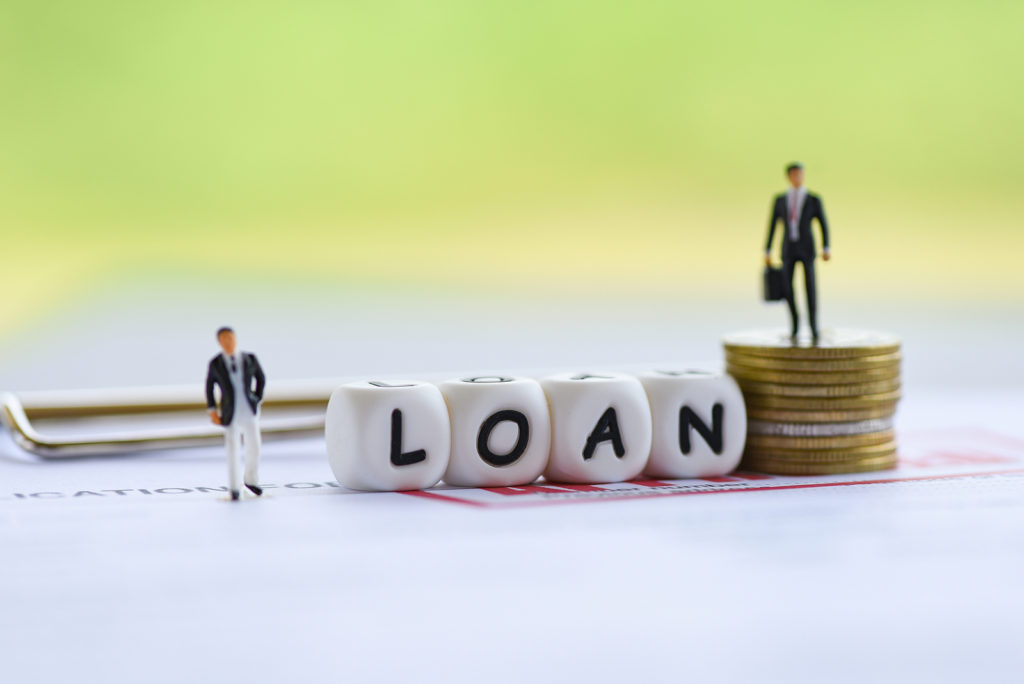How Do Personal Loans Work: A Comprehensive Guide for 2023
Personal loans can be a useful tool for those who need to borrow money for a variety of reasons. Whether it’s for consolidating debt, paying for home renovations, or covering unexpected expenses, personal loans can provide the necessary funds. But how do personal loans work?
In general, a personal loan is a type of installment loan that is usually unsecured. This means that the borrower does not have to offer up any collateral or assets in order to secure the loan. Instead, the borrower receives a lump sum of money and agrees to make fixed payments, with interest, over a set period of time. And the amount of money that can be offered through a personal loan is usually based on annual income, assets, and home value.
The terms of a personal loan can vary depending on the lender and the borrower’s creditworthiness. Typically, lenders offer loans ranging from $1,000 to $50,000, with repayment terms ranging from one to seven years. Interest rates can also vary widely, depending on the borrower’s credit score and other factors.
Understanding how personal loans work can help borrowers make informed decisions about their finances and ensure that they are getting the best possible deal.

What are Personal Loans?
Personal loans are a type of installment loan that allows individuals to borrow a lump sum of money from a lender, which they then pay back in fixed payments over a set period of time. Personal loans can be used for a variety of purposes, including debt consolidation, home renovations, medical expenses, or even a vacation.
Definition
A personal loan is an unsecured loan, which means that the borrower does not need to provide any collateral to secure the loan. Instead, lenders rely on the borrower’s creditworthiness to determine whether or not to approve the loan. Personal loans can be obtained from banks, credit unions, or online lenders, and typically range from $1,000 to $50,000, with repayment terms ranging from one to seven years.

Types of Personal Loans
There are several types of personal loans available to borrowers, each with its own unique set of features and benefits. Some of the most common types of personal loans include:
- Unsecured personal loans: These loans do not require any collateral and are typically based on the borrower’s creditworthiness. Unsecured personal loans generally have higher interest rates than secured loans, but may be a good option for borrowers who do not have any assets to pledge as collateral.
- Secured personal loans: These loans require collateral, such as a car or home, to secure the loan. Secured personal loans generally have lower interest rates than unsecured loans, but may be riskier for the borrower if they are unable to repay the loan.
- Debt consolidation loans: These loans are designed to help borrowers consolidate high-interest debt, such as credit card debt, into a single, more manageable payment. Debt consolidation loans may have lower interest rates than credit cards, which can help borrowers save money on interest charges.
- Payday loans: These loans are short-term loans that are typically due on the borrower’s next payday. Payday loans are generally considered to be a last resort option, as they often come with very high interest rates and fees.
- Credit-builder loans: These loans are designed to help borrowers build or improve their credit score. Credit-builder loans may have lower interest rates than other types of personal loans, but may require the borrower to make regular, on-time payments in order to see a positive impact on their credit score.
Overall, personal loans can be a useful tool for borrowers who need to borrow money for a specific purpose. However, it is important for borrowers to carefully consider the terms and conditions of any loan before signing on the dotted line, and to make sure that they are able to repay the loan on time and in full.
How to Apply for a Personal Loan
Applying for a personal loan can be a daunting task, but it doesn’t have to be. By following a few simple steps, you can increase your chances of getting approved for a loan that meets your needs. This section will cover the eligibility requirements and application process for a personal loan.
Eligibility Requirements
Before applying for a personal loan, it’s important to understand the eligibility requirements. Each lender has its own set of requirements, but some common factors that lenders consider are:
- Credit score: A good credit score is typically required to qualify for a personal loan. Most lenders require a minimum credit score of 600, but some may require a higher score.
- Income: Lenders will want to see that you have a steady income to ensure that you can make the loan payments. Some lenders may require a minimum income of $20,000 per year.
- Debt-to-income ratio: This is the ratio of your monthly debt payments to your monthly income. Lenders prefer a debt-to-income ratio of 40% or lower.
- Employment history: Lenders may want to see that you have a stable employment history, typically with at least two years of continuous employment.
Application Process
Once you’ve determined that you meet the eligibility requirements, you can begin the application process. Here are the steps to follow:
- Pre-qualify: Before submitting a formal application, it’s a good idea to pre-qualify for a personal loan. This will give you an idea of the estimated rates, monthly payments, and terms that you may be offered. Most lenders offer pre-qualification online, and it typically involves providing some basic personal information.
- Compare offers: After pre-qualifying, you’ll receive offers from multiple lenders. It’s important to compare the offers to find the best one for your needs. Look at the interest rates, fees, and repayment terms to determine which offer is the most favorable.
- Gather personal information: Once you’ve chosen a lender and offer, you’ll need to gather your personal information. This typically includes your name, address, Social Security number, income information, and employment history.
- Complete the application: You can typically complete the application online, although some lenders may require an in-person application. The application will ask for your personal information, as well as information about the loan amount and purpose.
- Wait for approval: After submitting the application, you’ll need to wait for the lender to review and approve it. This can take anywhere from a few hours to a few days, depending on the lender.
In summary, applying for a personal loan involves meeting the eligibility requirements, pre-qualifying, comparing offers, gathering personal information, completing the application, and waiting for approval. By following these steps, you can increase your chances of getting approved for a loan that meets your needs.

Factors to Consider Before Getting a Personal Loan
Before applying for a personal loan, there are several factors to consider. This section will discuss some of the most important factors to keep in mind.
Credit Score
A credit score is a crucial factor in determining whether or not a borrower will be approved for a personal loan. The higher the credit score, the better the chances of approval and getting a favorable interest rate. A credit score is a reflection of a borrower’s creditworthiness and is based on their credit report. Lenders will typically look for a credit score of at least 600, but a score of 700 or higher is ideal.
Debt-to-Income Ratio
Another important factor to consider is a borrower’s debt-to-income ratio (DTI). This is the percentage of a borrower’s monthly income that goes towards paying off debt. Lenders prefer a DTI of 36% or lower, but some may be willing to work with borrowers who have a higher DTI. Borrowers with a lower DTI are more likely to be approved for a loan and get a favorable interest rate.
Interest Rates
Interest rates are a significant factor to consider when applying for a personal loan. The interest rate is the cost of borrowing money and is expressed as a percentage of the loan amount. Borrowers with a good credit score and low DTI are more likely to qualify for a lower interest rate. It’s essential to shop around and compare rates from different lenders to ensure that you’re getting the best deal.
Fees
In addition to interest rates, borrowers should also consider any fees associated with the loan. Some lenders charge origination fees, which are fees charged for processing the loan. Other fees to watch out for include prepayment penalties and late payment fees. It’s crucial to read the fine print and understand all the fees associated with the loan before signing on the dotted line.
Collateral
Collateral is an asset that a borrower pledges as security for the loan. Secured loans require collateral, while unsecured loans do not. Collateral can include a car, home, or other valuable assets. Borrowers who have collateral may be more likely to be approved for a loan and get a favorable interest rate. However, there is a risk of losing the collateral if the borrower is unable to repay the loan.
In summary, before applying for a personal loan, borrowers should consider their credit score, DTI, interest rates, fees, and collateral. It’s essential to shop around and compare rates from different lenders to ensure that you’re getting the best deal. Borrowers should also read the fine print and understand all the fees associated with the loan.
Repayment of Personal Loans
When it comes to repaying personal loans, borrowers typically have a fixed amount of time to repay the loan in full. This period is called the loan term, and it is usually between one and seven years for most installment loans. During this time, borrowers make regular payments to the lender, which include both principal and interest.
Repayment Terms
Repayment terms can vary depending on the lender and the type of loan. Some lenders offer fixed-rate loans, which means that the interest rate remains the same throughout the loan term. Others offer variable-rate loans, which means that the interest rate can change over time.
Origination Fees
Origination fees are fees that lenders charge borrowers to process their loan application. These fees can vary depending on the lender, but they are usually a percentage of the loan amount. It is important to factor in origination fees when calculating the total cost of a loan.
Monthly Payments
Monthly payments are the regular payments that borrowers make to the lender to repay their loan. These payments typically include both principal and interest. The amount of the monthly payment can vary depending on the loan amount, interest rate, and loan term.
Prepayment Penalties
Some lenders may charge prepayment penalties if borrowers pay off their loan early. These penalties can be a percentage of the remaining balance or a set fee. It is important to check if a lender charges prepayment penalties before taking out a loan if you plan on paying it off early.
Overall, borrowers should carefully consider the repayment terms, origination fees, monthly payments, and prepayment penalties of a personal loan before taking one out. Using a loan calculator can help borrowers estimate the total cost of the loan and determine if it is a feasible option for their financial situation.
Benefits and Risks of Personal Loans
Personal loans can be a useful financial tool for many people, but they also come with both benefits and risks. In this section, we will explore the advantages and disadvantages of personal loans.
Benefits
Consolidation of Debt
One of the most significant benefits of personal loans is that they can be used to consolidate debt. This means that you can use a personal loan to pay off multiple debts, such as credit card debt or medical bills, and then have just one monthly payment to make. This can make it easier to manage your finances and can also help you save money on interest charges.
Fixed Interest Rates
Personal loans typically have a fixed interest rate, which means that the interest rate will not change over the life of the loan. This can make it easier to budget for your monthly payments and can also provide peace of mind, knowing that your interest rate will not increase unexpectedly.
Lower Interest Rates
Personal loans often have lower interest rates than credit cards, which can save you money in the long run. As of May 2023, the average personal loan rate was 10.97 percent, while the average credit card rate was 20.33 percent.
Improving Credit History
Taking out a personal loan and making your payments on time can help improve your credit history. This is because your payment history is one of the most significant factors that affect your credit score.
Risks
Defaulting on the Loan
One of the most significant risks of personal loans is that if you are unable to make your payments, you could default on the loan. This can have serious consequences, such as damage to your credit score and legal action taken against you by the lender.
High-Interest Rates
While personal loans often have lower interest rates than credit cards, they can still have high-interest rates, especially if you have poor credit. This can make the loan more expensive over time, and you may end up paying more in interest charges than you would with a credit card.
Secured vs. Unsecured Loans
Personal loans can be secured or unsecured. Secured loans require collateral, such as a car or house, which can be repossessed if you default on the loan. Unsecured loans do not require collateral but can have higher interest rates.
Debt Consolidation
While consolidating debt with a personal loan can be a benefit, it can also be a risk. If you do not address the underlying issues that caused you to accumulate debt in the first place, you may end up with even more debt after consolidating.
In conclusion, personal loans can be a useful financial tool, but they also come with risks. It is essential to weigh the benefits and risks carefully before taking out a personal loan and to make sure that you can afford the monthly payments.

Alternatives to Personal Loans
While personal loans can be a good option for those who need to borrow money, they’re not the only option available. Here are some alternatives to personal loans that borrowers can consider:
Credit Cards
Credit cards are a common alternative to personal loans. If a borrower is able to plan and pay their balance in full each month, credit cards can be a convenient and flexible way to borrow money. Credit cards can also offer rewards programs, such as cash back or points, which can be a bonus for responsible borrowers.
However, credit cards can come with high interest rates and fees, especially if the borrower carries a balance from month to month. Borrowers should also be careful not to overspend or miss payments, which can negatively impact their credit score.
Home Equity Loans
Home equity loans are another option for borrowers who own their home and have built up equity. A home equity loan allows a borrower to borrow against the value of their home, with the home serving as collateral for the loan.
Home equity loans typically have lower interest rates than personal loans, as the loan is secured by the home. However, borrowers should be aware that if they are unable to make payments on the loan, they risk losing their home.
Credit Unions
Credit unions are non-profit financial institutions that offer a range of financial products and services, including loans. Credit unions typically offer lower interest rates on loans than traditional banks, as they are owned by their members and operate on a not-for-profit basis.
Credit unions can be a good option for borrowers who are looking for a more personal touch, as they often have a community focus and are more willing to work with borrowers who may not meet the strict requirements of traditional banks.
Overall, borrowers have many options when it comes to borrowing money. By considering alternatives to personal loans, borrowers can find the option that best fits their needs and financial situation.
